Nov 22 2019 (a 26 minutes read)
The end of the world as we know it
This is the transcript for my November 14 closing plenary at World Usability Day 2019 in Milano, Italy, slightly edited for clarity and with a few additional sources added in. The slide deck with speaker notes can be found on SlideShare
Good evening everyone. It’s been a lovely day: let me add a little salt to it and be your resident Dutch uncle for these last thirty-plus minutes.
I hail from Parma, but spent quite a lot of time in Milan between the late 80s and the late 90s. I was pursuing my master’s at the School of Architecture of the Politecnico, in Città Studi. We didn’t have any fancy Bovisa campus at the time and graduates came in just two flavors: architects from the School of Architecture, and engineers from the School of Engineering. My evident incapability of wearing any color but black or gray clearly gives me away as belonging to the former group.
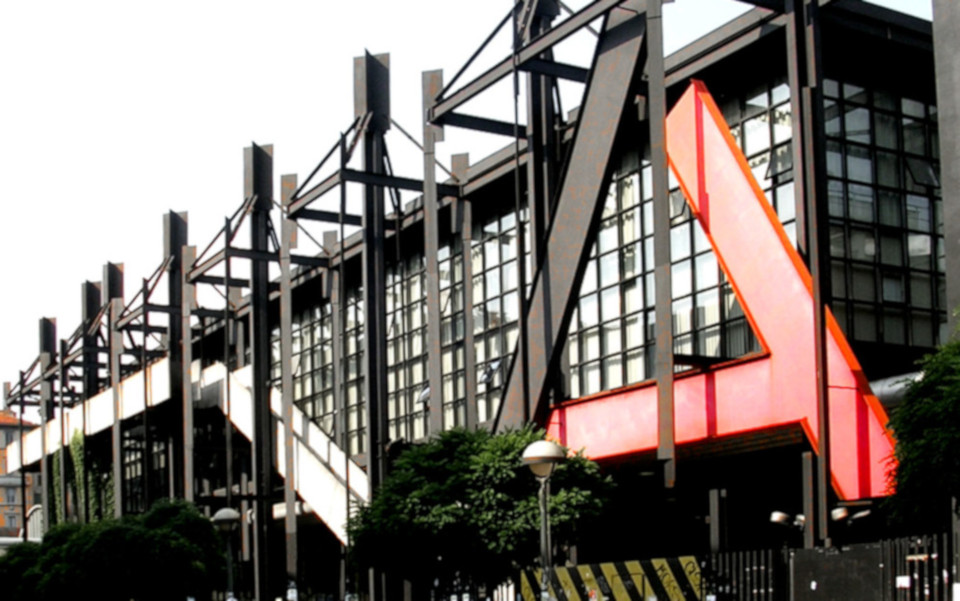
V. Viganò, School of Architecture, Politecnico di Milano, Città Studi (www.ordinearchitetti.mi.it)
I lived in the Porta Genova neighborhood for a while. Then I took up a job as a sysadmin on big iron in Bologna and started commuting between my workplace and my classes, the whole 200 something kilometers three-four times a week. This was 1989, we had no internet and no smartphones. The Intel i486 processor had just hit the market and “retro gaming” was going strong, only we called it “gaming”.
It’s now 2019, so we got ourselves a perfectly neat 30 years in between my time in Milan as a student and this keynote address. If I had to fit all of the different bits and pieces, plastic and paper mostly, required to live my life as a commuting working student, this cardboard box here would be an approximate good fit (points to moving box on stage). It was books, booklets, notebooks, maps, blueprints, a camera, pens and drawing implements, monthly tickets for the train, the subway, and lunch at the university canteen, my university records, notes from classes, more drawings, and the odd telephone tokens to call home if I missed a train.
In 2019, all of that necessary information, tools and implements would probably be contained within this thin black slab of glass plastics and metal (shows smartphone), my laptop, and my Kindle. I live in a small city in Sweden now, I flew in taking much of my work with me, including tons of stuff I have to read and probably won’t, and I could hardly fill a fourth of that box.
This is wondrous and terrible, and also the new normal, the way things have always been to most of you. Is this then all we did? We made things smaller, immaterial, and got rid of the cardboard box?
We certainly shrunk things down, and moved from thinking Walkmans are the epitome of cool to thinking that iPhones are. And thanks to convergence, your smartphones are like immensely reconfigurable Swiss Army knives. They can do lots of things the Walkman couldn’t do.
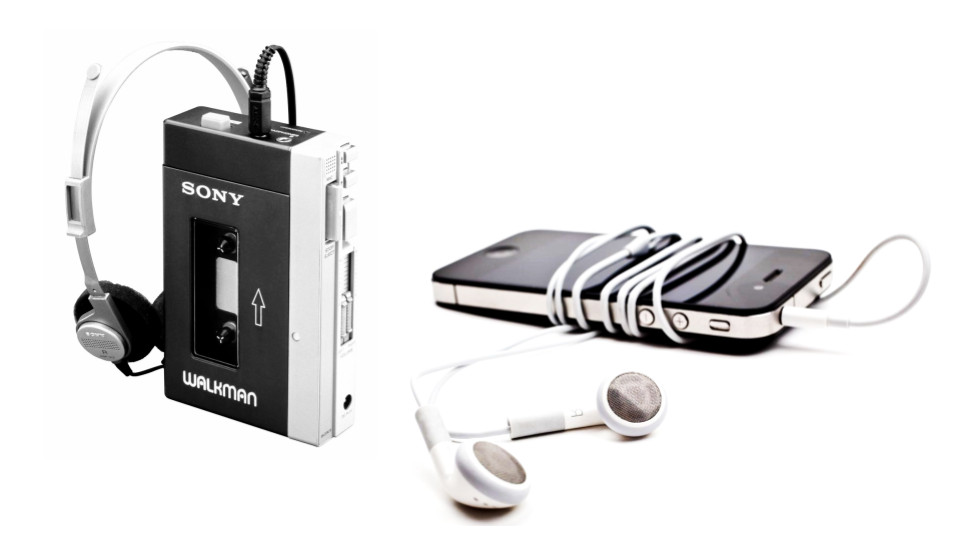
By replacing Walkmans with smartphones we sure got rid of a billion cassettes, didn’t we, and of the need to carry a pencil with you should you need to manually rewind them. But is that it? The shrinking? I don’t think so. There’s something more to it: let me give you a practical demonstration, with a bit of help from all of you.
I guess you all have at least one smartphone with you, right? Can you please take it out of your pocket, bag or purse and hold it up? Great. Please hold it up. (audience members hold their phones up) Great, thanks.
Now, can you please unlock it? (audience members unlock their phones) Done? Fantastic.
Now, please pass your phone to the person on your left.
(some do that, others look around to see what everyone is doing, there’s some nervous laughter) Yes. The silence, unsure glances and nervous giggling is precisely the demonstration I wanted to provide. A part from a few naive souls who just did that right away, bless their heart (few laughs), most of you are thinking “Is he serious? He can’t be”. Thanks, put them away, you don’t need to actually do that. And those of you who received one, give it back, don’t delete and don’t peek.
All I wanted was to make you uncomfortable, and I could only do that because yes, we did much more than dematerialize objects. You would generally feel much more ok with sharing your wallet than your phone. Your phone is a part of you: we’re all cyborgs with detachable and rechargeable parts. There’s an elegant way to explain in three simple, systemic steps that what we did wasn’t simply making a box full of paper fit into a smaller device.
Digitize, digit-al-ize, transform
At the beginning, we digitized. We turned analog artifacts into digital artifacts. Letters for example, or ledgers. And music, of course. Then we “digit-al-ized”. We applied the approach to the larger processes. In 1989, digitalization was already underway in a number of industries but, as usual, the future was not evenly distributed.
If we stick to music, this transformative moment came with the iTunes Store, part of the push towards a digital marketplace for music that Apple started with iTunes, the “World’s Best and Easiest To Use Jukebox Software”, and the original iPod in 2001. Gone, at least conceptually, was the physical record store and the need to organize physical artifacts, the records, in a physical space. A fraction of control went away with it, as now the same song or LP could be living under multiple categories and, in time, endlessly re-categorized in accordance with one's preferences.
Ripple after ripple, digitalization produced systemic transformation. Or, as the European Union loves to call it, digital transformation. This is the world of Spotify and all other streaming services. It is a world where entire industries, the music industry kicking and screaming I’d venture, have been thoroughly transformed into something different, and act as reinforcing loops: digitally transformed ecosystems create the business conditions and the social and cultural space for introducing more digital transformation in more processes.
We’re now at a point where these three steps co-exist and sometimes overlap, as transformation happens at different speeds. Digitization and digitalization are still with us, of course. Using WhatsApp is just more efficient than placing a phone call so we can connect specialists in cardiology and patients suffering from heart failure symptoms in rural India. So digitize. It’s not all good news, clearly. Digitalize, and use Periscope to live broadcast rape. As heart-warming or appalling as these cases are, and you’ll find plenty of both if you only look, they are a shallower reflection of deeper, systemic transformations.
Self check-outs in supermarkets are more and more the norm. They are all over the place in Sweden, where we prefer to avoid interactions with other human beings whenever possible, but I saw plenty of them here in Milan as well. And around the world, of course.
A few years ago Tesco introduced an on-the-go, scan-and-shop system in the subway in Seoul, South Korea. You phone-scan what you need while waiting, and then pick up your grocery or your soda on your way out.
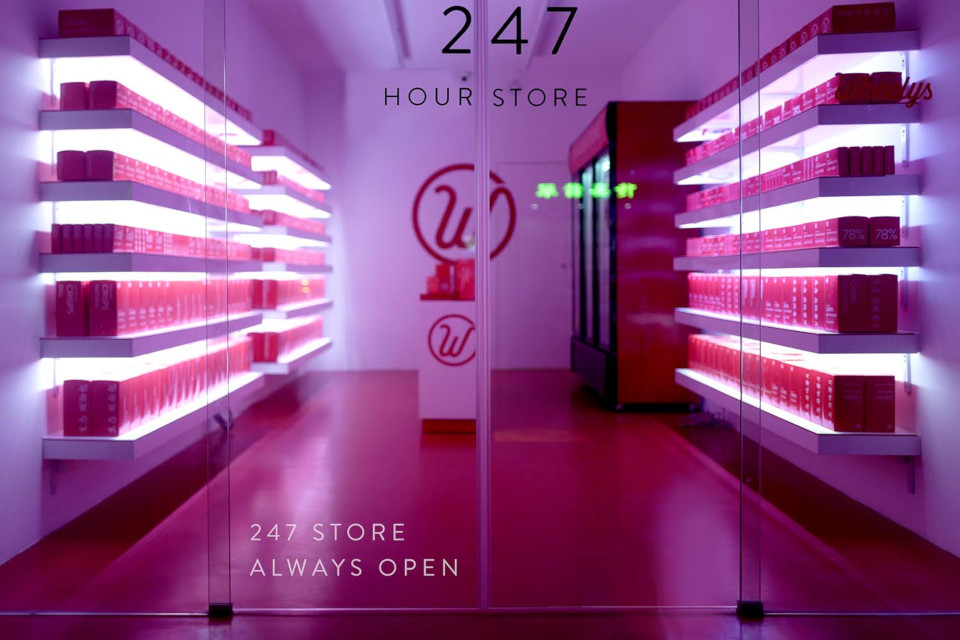
The next step is 24/7, 100% unmanned stores. Robert Ilijason, a Swedish engineer, created and implemented what we’d call a prototype in the small village of Viken, Sweden, because the local supermarket's opening hours did not match his family’s needs. Wheelys, an international company, bought the concept from him and in 2017 opened its first such store in Shanghai. You use your smartphone and an app to access the premises and register your purchase. Digital transformation. These three examples, introducing a string of what can be read as plain common sense, consecutive steps, introduce systemic implications, socio-technical ripples, that we do not have in the previous examples. They impact multiple industries, consolidated logistics and supply chains, and the day-to-day behavior and livelihood of millions of people.
Digital transformation is bringing in even more significant consequences. After all, “we make our tools and then our tools make us”. Research tells us that online dating is having an impact on interracial relationships and it is changing our understanding of what marriage means. If Tinder can influence the way we get to produce the next generation, I’d be inclined to say that we’re way past the “paperless office”, aren’t we? This brings me to the core of my conversation with you today.
Design for the future we want?
“Design for the future we want” is this year’s theme. And it’s a lovely theme. But who’s this “we” so prominently mentioned? Us? The organizers and volunteers? The many separate design communities that share some interest in the event? Is it all those thousands who are part of World Usability Day around the world? This is the map of WUD locations we can find on worldusabilityday.org.
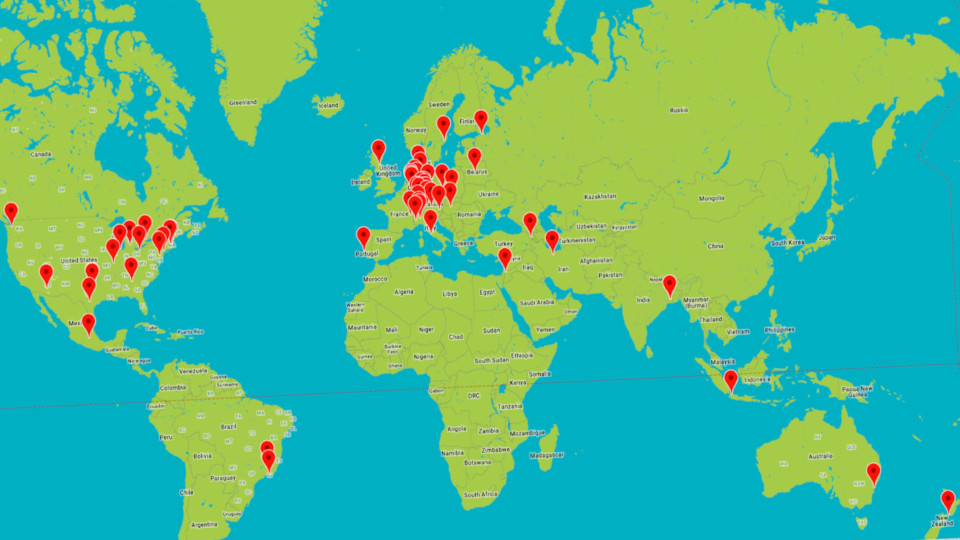
The map of WUD 2019 locations (www.worldusabilityday.org)
It is immediately apparent that even geopolitically not everyone is accounted for. That might imply one of two things: that there are people out there who are not “we”, or that “we” haven’t thought about this as much as “we” should have. And before someone gets defensive: I get it. I understand how the theme has to be powerful, inspiring, and aspirational in nature. And I understand it is practically hard to live up to such high expectations. Still, we should do better than just unquestioningly believe in our own stone soup-making.
Let me introduce you to another Swede, Hans Rosling. He was a physician who later in his life made understanding his mission, as R. S. Wurman would say. Rosling thought everyone ends up a prisoner of their own prejudices, and these lead to skewed, and often negative, visions of the world. Facts, as bad as they are, tell a different story, a story of possibilities. So he worked with visualization and infographics to have as many people as he could to see and understand the difference. Rosling, the possibilist, never the optimist, passed in 2017, but you might have encountered him nonetheless if you are into TED talks: his most famous one is called “The magic washing machine” and has been seen millions of times. In that talk, Rosling argues that the washing machine was a mighty important invention, possibly one of the most important inventions of the 20th century. He showed a neat infographics in which he divided the 7 billion people alive in 2012, according to their consumption of fossil fuels. What you see here is my interpretation, as the quality of the video did not allow for some good screen capture.

World population in 2012 according to consumption of fossil fuels and levels of income
Each individual little human represents one billion people, and each red square represents one fuel unit consumed, for comparison. First observation: the rightmost one billion people consumes as much as the remaining six. Rosling and his team also looked at income, and drew lines, calling them the power, wash, and air line. If you are in the leftmost bracket, before the power line, you have no access to an electric grid. That’s two billion people. If you are the next group, you do have access to electricity, but so inconsistently that you can only cover the bare necessities. To enjoy luxuries such as a washing machine you need to cross the next line, and be one of the remaining two billion people. Of these two billions, one gets to enjoy travel, and flies around the world. That’s all of us in this room.
Let’s make this breakdown even more concrete. The following image is taken from Rosling’s book “Factfulness”, but see that you pay a visit to Dollar Street, an amazing project started by Anna Rosling Rönnlund, a designer and Rosling’s daughter-in-law, to “show how people really live” and that uses “photos as data so people can see for themselves what life looks like on different income levels. There’s a lot more there and it’s quite the eye opener.
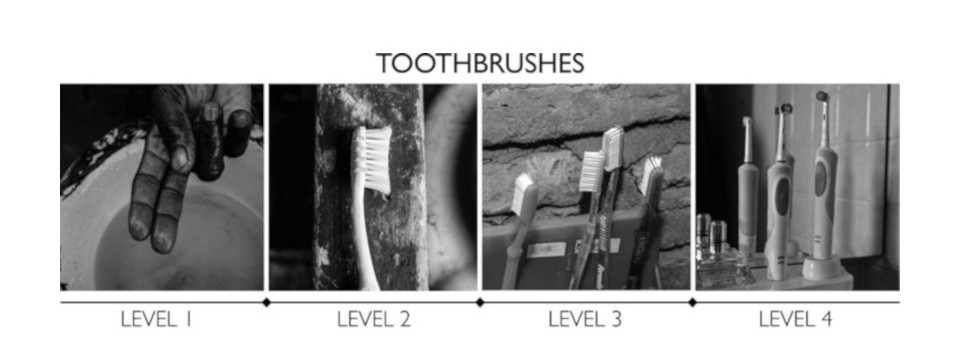
What your toothbrush looks like if you live below the power line or above the air line
If you’re part of that first group, those two billions below the power line, you probably don’t have a toothbrush at all. If you are part of the second group, you have one toothbrush. That is, one for the entire extended family to share. If you are in the third group, congratulations, you don’t have to worry about sharing with grandpa. Those of us in the fourth group, we can have an electric toothbrush if we want. When it comes to preparing food, if you are group one you cook on open fires. Your meals will be prepared in very similar ways regardless of whether you live in Nigeria or China. You also have a patchy roof over your head, locally sourced, sure, but not particularly waterproof or even safe, and your toilet is a hole in the ground, a pit, with four “walls” around it.
The upper one billion
Now there’s an interesting observation to be made for us who design for a living: Rosling comments that when we see pictures of everyday life, we see pictures from lives lived above the air line. If you google “toilet, bed, or stove”, you get served images from that rightmost one billion demographics. Google will not help you if you want to see what everyday life is like for the other six billions. Sobering, isn’t it?
That’s why Rosling devoted his TED time to the washing machine. These five billions below the wash line, how do they wash? Or better, as Rosling himself says, “how do most of the women in the world wash?” The answer is by hand.
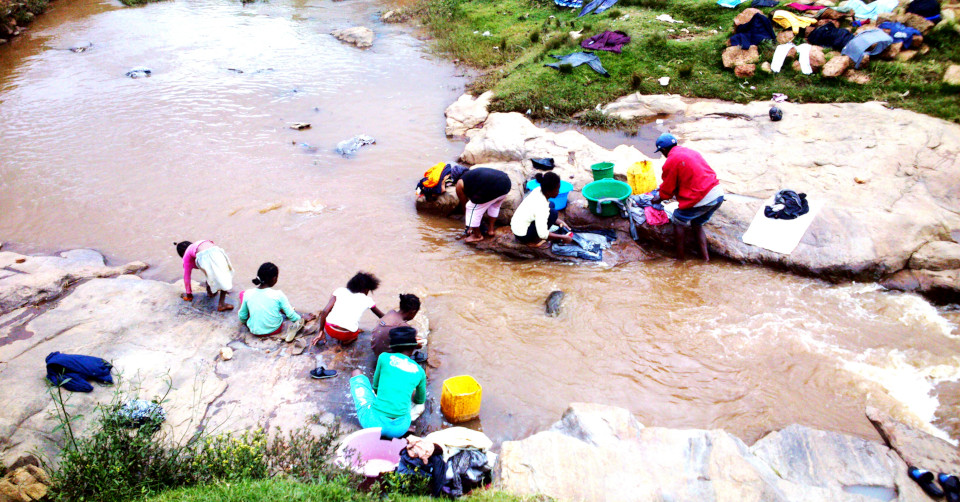
(Image: Rakoto Kely, Madagascar 2017. Wikimedia Commons, Creative Commons Attribution-Share Alike 4.0 International license)
Where there’s water. Spending long hours. And of course “they want the washing machine”. And why shouldn’t they? You’re free to dissent, but I agree with Rosling that it’d be incredibly arrogant to just say “sorry, you can’t have what we have, because reasons”. I also believe it’d be absolutely inconsequential. But we cannot, we should not, I hear some say: it’s not sustainable. It’s bad. For us, for them, for the Earth.
Here the systemic nature of “making” that propels digital transformation forward comes into play again, albeit in a different way. When I hear practitioners discussing that they want to do “good”, I’m torn between wanting to compliment them for their good heart, and wanting to slap them silly since they are either dangerously naive or, at worst, plain incompetent.
Ontologically, things, products, services, they only become meaningful when they serve a purpose. A knife is not good or bad per se. Information is not good or bad per se. Today we listened to an incredibly good talk about inclusion and accessibility best practices from a person working for one of the worst offenders gracing the internet today. Nothing is good or bad per se. (Not even oxygen. In case you don’t know, oxygen is slowly killing you, so you might want to breath conservatively). Georges Braque, the painter, is quoted as saying “I don’t believe in objects. I only believe in their relationships”. That is good advice we should follow. Good or bad are human constructs: what they imply is presence, some form of “we”, even if it’s “them”, as we can only have a “them” if we have an “us”. We cannot ignore or escape this conundrum: whatever we bring into being through design, it could save someone from a heart attack, or be used to perpetrate violence. What we cannot do is pretend this will not happen. That it’ll be “good”. We’ll be good. We’ll be fine. The washing machine is no different. It’s just a matter of who’s “we”. Listen to Rosling: “My mother explained the magic with this machine the very, very first day. She said, “Now Hans, we have loaded the laundry. The machine will make the work. And now we can go to the library. Because this is the magic: you load the laundry, and what do you get out of the machine? You get books out of the machine.”
So that “we” in the conference theme worries me. For a community that claims to be this human-centered, I consider this untenable naivety. We have a duty not to eat the stone soup, we have a responsibility to see and fix what’s broken without pretending that solving that one problem will never ever create a new one. Because it will. Today’s smart and right is invariably tomorrow’s unbelievably stupid and wrong.
So, please, ask yourselves who is this “we”, because even in Europe, today, that might also include people below the air line, and the wash line. People looking for a better, different future for themselves and their children. People who have lost everything because of a war and are seeking refuge somewhere safer. Uprooted, scattered.

(Image: Naniso Tswai, The Truth at the Bottom of the Sea)
Or it might not. You are always designing for one of the possible futures someone wants. That “we” is really many different “we’s”, some of them conflicting. It’s plain common sense, yes, but at times I doubt common sense is common currency in our conversations, drowned by the constant drone of “what’s next”, “disrupt this” and “disrupt that”, and (of course) “this is the end of the world as we know it”.
Pace layers and the M3
Well, if it’s the end of the world, I must say I feel fine, and I think you should too. Just slow down and embrace continuity instead of disruption. Humans haven’t changed much in the past two hundred thousand years, and that’s good foundations. You can count on it. Technology doesn’t just mean “digital”: everything around you and on you, from your shoes to your hairdo, is a product of technology (and read some Krippendorff to figure out why this “tech v nature” thing is another “good v bad” false equation. The very idea of the existence of a “natural world” is a human construct). Acquaint yourselves with the history of design. It is not something we invented after we came up with computers. John Knight today mentioned William Morris. By all means, become familiar with his work and writings. And with those of Peter Beherens, Marianne Brandt, Marcel Breuer, Ray and Charles Eames. I could go on forever, but we need some structure. How do we bring continuity into the practice? Turns out it’s the other way around and Stuart Brand and his pace layers can give us a hand.
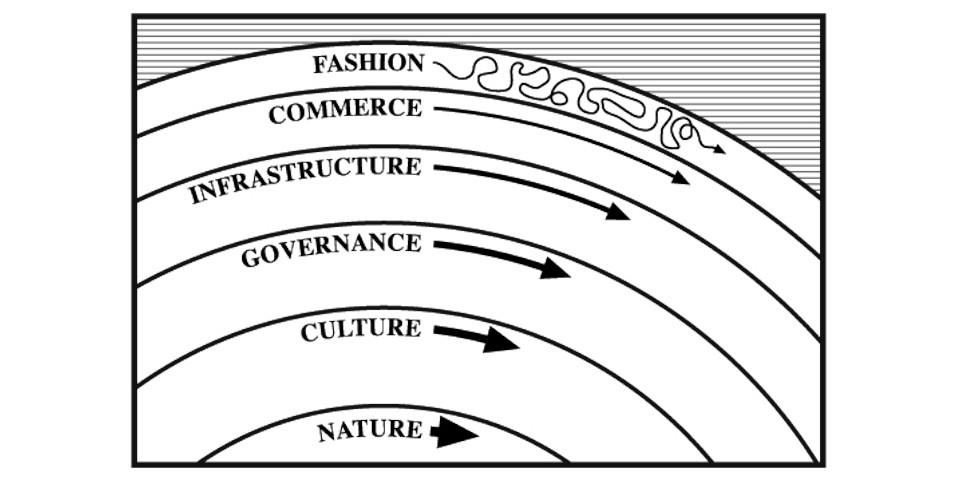
Stuart Brand, The Clock of the Long Now
Derived from Brand’s practice as an architect and his observation that the different layers in a buildings, from the site to the structure to the interiors, change at different speeds, pace layer theory provides a general model that explains how socio-technical systems move at different speeds. Fashion is fastest. Infrastructures, think roads or power grids, change slower. Culture changes over even longer periods of time, and nature is slowest. As I said, we’re not that different from our Cro-Magnon and Neanderthal ancestors.
Pace layers also allows us to introduce another very important model, called the M3, which is something every student of design should be told on the very first day of design school. Van Gigch and Pipino’s Meta-Modeling Methodology looks at any field of knowledge as a layered system in which epistemology, science, and practice represent three distinct types of inquiry that mutually influence each other. Epistemology, the meta level, concerns itself with the conceptual framework of a scientific community, the big questions, and it’s the locus of paradigm shifts. Science, the object level, presents the theories and models that are used to describe, explain and predict problems and their solutions. Practice, the application level, is where practitioners apply their tools to solve everyday problems. Epistemological questions frame what the field is about, scientific theories and methods are used by the practice to provide concrete solutions to day-to-day issues. These in turn constitute a source of evidence that slowly trickles up to support or confute theories and methods and, ultimately, produce paradigm shifts and so on.
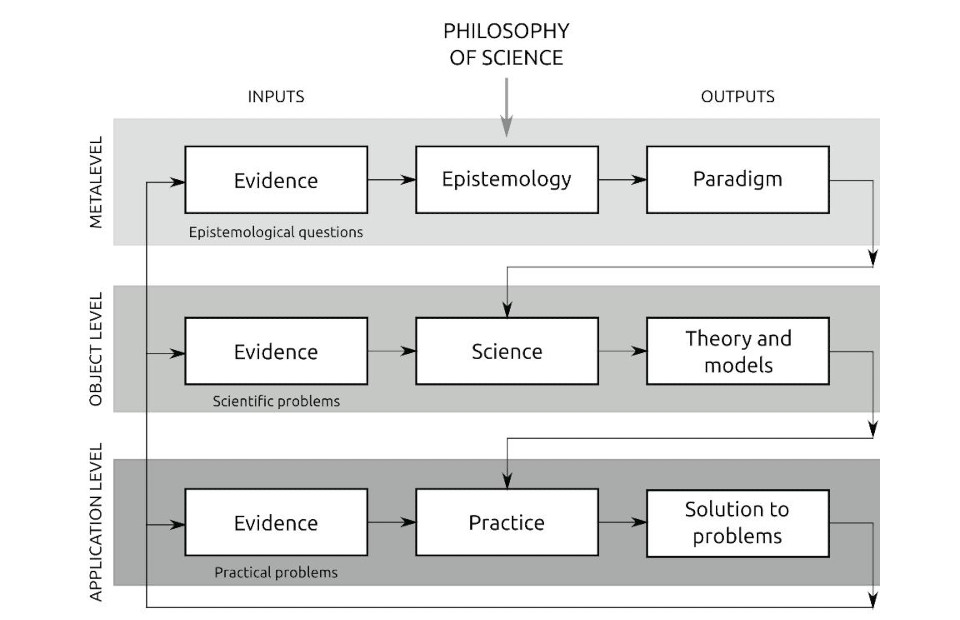
(Image: Flávia Lacerda and Mamede Lima-Marques, Information Architecture as an Academic Discipline)
The M3 represents an inverted pace layer model: the practice moves fastest, and the epistemology slowest. When design conversations flatten everything down to the practice, as they usually and unfortunately do, they end up misinterpreting and misrepresenting the field greatly, to everyone’s loss.
If we on the other hand understand the practice of design as being one part of a larger whole that includes the science and the philosophy of design and that comprises, conceptually and practically, a series of layers moving at different paces, we can recognize that rapid transformations, say from skeumorphic to flat to metro, belong mostly to the fashion layer of Stuart’s model and to the practice layer of the M3. Only time will tell if they’ll seep down to the slower layers, producing more long-lasting change, or if new methods or theories will come out of them. Armed with that knowledge, we can decide to engage with fashion, or dig deeper.
Paradigmatic change involves the bottom layers: infrastructure, governance, culture. But it does happen, it’s just much much slower. Think of it this way: you might repaint your walls anew every two years but only build a new house once in a lifetime. And just like building a new house is a much more momentous change than simply turning the walls of the living room light blue, the ripples that paradigmatic change creates have a vastly larger impact than anything happening only inside the small pond of design.
We’ve been through the mechanical 1700s, with its clockwork ducks and automatas, and everything, including the human body, being a machine; the electrical late 1800s, when everything could be fixed with a little jolt from the friendly electrodes, from hysteria to that embarrassing dandruff problem; the atomic 1940s and 1950s, with their “nuclear” family and commonplace faith in an orderly universe illuminated by science and expertise. We loved the atom so much we bought kids the “Gilbert U-238 Atomic Energy Laboratory” kit, which came with a warning that one should “not take ore samples out of their jars, for they tend to flake and crumble and (one) would run the risk of having radioactive ore spread out in (one’s) laboratory”. You can still find a few originals on EBay if you’re interested in making your house pet glow in the dark.
And now here we are, in the digital 2010s. You just heard Marco Tagliavacche before me telling you all about Juicero. I won’t add more as it seems unfair. Just remember they’re most definitely not the only company which came up with some extravagant “digital” concept. It’s that paradigm thing. Nothing digital can be “wrong”, just like everything that was mechanical, electrical, or atomic couldn’t at a certain point in time.
Now, let us apply the M3 to conceptually map out our understanding of design in these past thirty years that led us from digitization to digital and systemic transformation. It’s a rough, imprecise sketch, but bear with me. Imagine we can have an “initial” phase, left, that somehow ends around the time of the iTunes Store, and a “mature” phase, right, starting with the mass commercialization of smartphones, our transformation into cyborgs, and the blending of digital and physical.
Understanding the present to design for multiple futures
Where the initial phase is paradigmatically “digital, disembodied, and postmodernist” in nature, the mature phase is “postdigital, embodied, and post-postmodernist”. The science and practice layers are also different: different disciplines come center stage, and the object of design, what the professional designer works on, also changes. Let us take a look at what the three elements in the epistemological layer really mean and what they do imply.
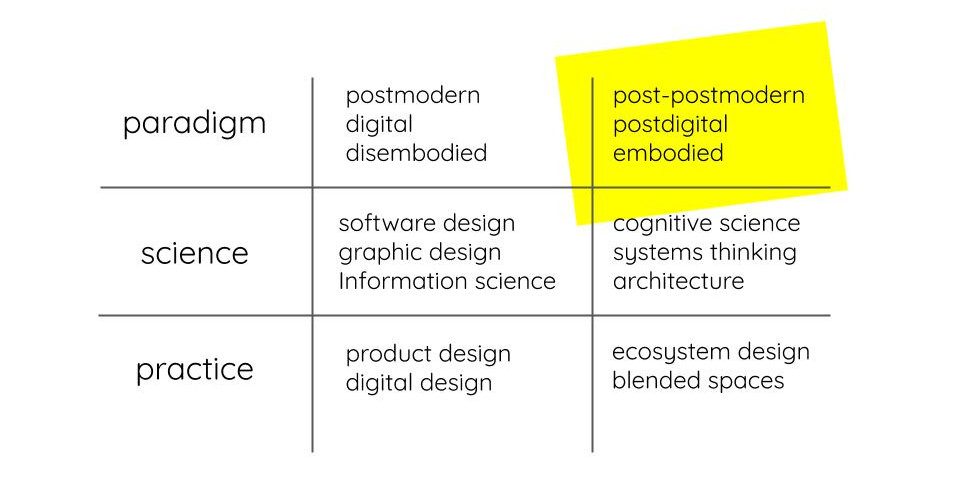
The M3 applied to new media design
Postmodernism was the zeitgeist of the second part of the 20th century. It is something you all immediately recognize as familiar, as you grew up immersed in it. It was a reaction to modernism, rejecting the modernist ideas of progress and Truth (capital “t”), and advocating instead for irony, pastiche, multiple points of view, the interlacing of highbrow and lowbrow, and a sense of detachment. Think Quentin Tarantino’s movies, or Eco’s “The Name of the Rose”, all the way to “Shrek”. In design you have Memphis, in architecture Charles Moore, or Portoghesi.
Still, postmodernism is profoundly rooted in auteur culture and in an idea of “product”. “Kill Bill” is a finished movie, we get to appreciate passively when complete. This new post-postmodernist culture that has emerged in the wake of everyday pervasive computing celebrates the death of the author and expertise. Alan Kirby, who calls it “digimodernism”, describes it as “anonymous, mass-produced culture” that thrives on constant change, evanescence, and loss of control. Where postmodernism is ironic, intellectual, detached, this new culture, a culture bred and raised on new media and that requires interaction, is raw and visceral. Twitter rage is not a bug, it’s a feature.
It is also a post-digital, not a digital culture. It implies digital just like we imply electricity. Nobody in their right mind would try to sell you something listing “it’s electric” as a premium feature unless you’re part of that “we” which includes the remaining six billions. So why should we do it with digital? Digital is here, it’s not going away. It’s commonplace. Just an hour ago, you didn’t even blink at the idea you had someone having a conversation with you via digital all the way from the US of A. You all went “awwwww” when the connection broke down. You expected that to work. Seamlessly. Invisibly. The internet is not a “virtual” world existing in some alternate reality, completely separated from the physical world.
Uber, the company we love to hate, provides you with cab rides. In the real world. Google Maps tells you where the restaurant is and how to get there. Even if I were to kidnap you and ship you to some remote city in Uruguay, chances are that as long as I didn’t take your phone away and your batteries last, you’ll just go “Right, where’s the closest bus stop?”.
When I started working on mainframes in 1989, my workplace was a datacenter. Big rooms, low temperatures, computers the size of a small truck. Computing happened through screens and keyboards, and it was disembodied. The only physical interactions happened through the big on/off button that we needed to press every once in a while when a reboot (scary!) was necessary.
Today, we have wearables, body augmentation, sensors that register your presence in the environment, actuators that change the environment accordingly, or the Disney Magic Band. But the best example of how embodied your relationship with digital has become is probably how you can tell that the person dm’ing you (not calling, that’s so previous generation) is a friend, family or your significant other and not some telemarketer by that warm, heartbeat-like buzz right on your butt.
Voice interfaces, gestural interfaces, conversational interfaces, artificial intelligence, are part of this shift (a shift I believe to be on the verge of becoming paradigmatic, but this is another talk). American kids are adding to the canonical three first words, “mum, dad, cat”, a fourth one: “alexa”. Is it good or bad? It’s neither, or both. On one hand, this is Amazon. They want to sell you stuff. They’re not doing it because they are interested in your kid’s wellbeing. On the other hand, kids who talk to Alexa seem to possess a larger vocabulary and acquire more precise diction earlier, a requirement to be understood by the appliance.
Where next? What next?
That’s not really up to me to say. I will contribute my part as we all do, but that’s a question that can only be answered by figuring out first which combination of “we” is being considered, what futures we want to design. One thing I can say is that design is not technology. Design is also not digital, as much as it isn’t mechanical or atomic. The futures we are already living in are a blended landscape where physical and digital come together. Embodied, postdigital, systemic. Continuity is necessary to escape our own, human timescale in which everything is new to us, here now and then gone. Go back to the basics, learn from the past. Break the rules knowing what the rules are. Make your designs work with the physical world, because that’s all we have. Make systems that are clearly a product of a postdigital world, but not necessarily digital themselves. Not everything needs to be electric, or atomic.
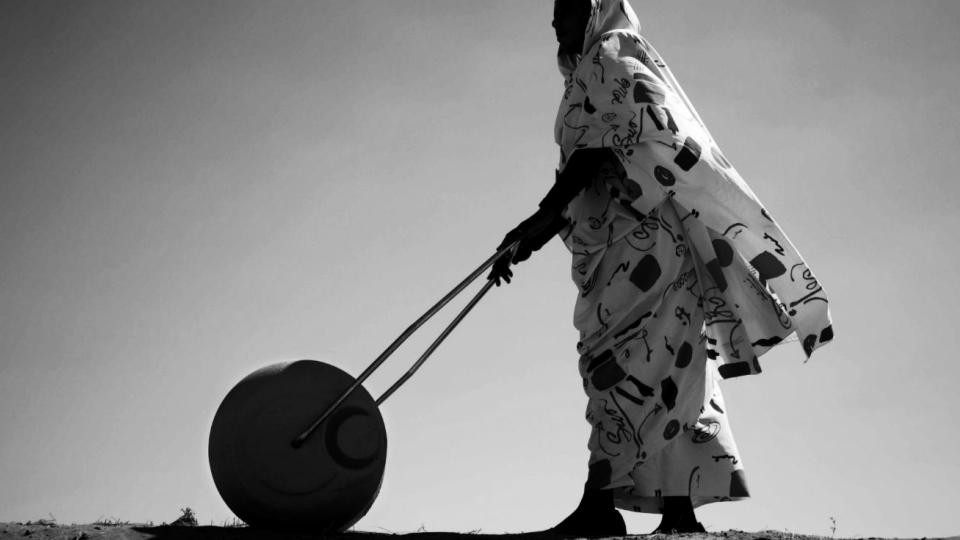
The hipporoller
Like the hipporoller, so that collecting water is simpler, safer, less demanding, more sanitary.

The Mine Kafon Ball
Like the Mine Kafon Ball, so that we can use a scaled-up wind toy made of low cost biodegrable plastic and bamboo to safely detonate landmines in war-ravaged zone where leftover mines continue to pose a threat to human life.
Be postdigital, be embodied, be systemic, be aware.
Thank you.
